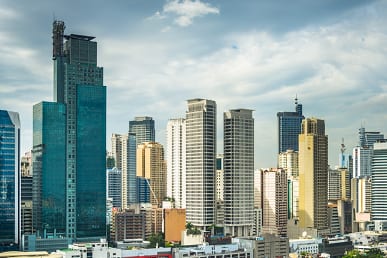Summary
The path to permanent residency can be long and challenging. Once obtained, permanent resident status can provide an individual or family with a great sense of comfort.
Every year the United States government issues over a million green cards. Many of the green cards are issued to individuals who are already residing in the United States. The process of applying for your green card while living in the United States is called Adjustment of Status.
What Is Adjustment Of Status?
The process used to apply for a green card from within the United States is called adjustment of status. When you apply to adjust your status, you can stay in the U.S. while applying for permanent residency and do not have to return to your native country.
How Do I Know If I Am Eligible?
You can often apply for an adjustment of status if you meet these three basic requirements:
- You must be present and physically residing inside the U.S. when applying for adjustment of status (and will be required to complete the entire process while inside the United States).
- You have made a lawful entry into the country. Lawful entry simply means that you were allowed into or paroled into the United States with valid papers and have appeared in front of a U.S. immigration officer—and that officer has certified your entry into the country. It is still considered lawful entry if you have entered the U.S. with a valid visa, but the visa has since expired.
- You have an immigrant visa that is immediately available to you at the time you file your application for adjustment of status. Your U.S. citizen relatives can file an application for adjustment of status along with the I-130 petition. On the other hand, those who are family preference applicants must ensure that their category is “current” in the visa bulletin before submitting their application form I-485 adjustment of status.
Another crucial aspect to keep in mind is that you must maintain your eligibility throughout the adjustment of status process. Changes in circumstances can impact the application. To date, only a select group of individuals can adjust status. More often than not, adjustment of status is used primarily by immediate relatives, K1 visa adjustment of status, refugees, asylees, and certain employer-sponsored visas.
Please note that satisfying the three requirements stated above does not guarantee eligibility for adjustment of status. It is critical for you to consult an experienced and knowledgeable immigration attorney regarding the specific circumstances in your case.
How Do I Get A Green Card Through Adjustment Of Status?
There are several steps to complete to get a green card. Start by checking your green card eligibility.
Ask your sponsor to file the necessary petition for your specific green card category. The two most common ones are as follows;
- Form I-130 is for a family-based green card
- Form I-140 is the form your employer will need if they are sponsoring you for employment purposes
How Long Does It Take?
Once your petition is filed, USCIS will assess and grant approval to those who are eligible. The timeline for this can range from several months to even over a year. And it will depend heavily on the circumstance of the applicant.
Once the USCIS grants the petition, you can check your green card category for up-to-date visa availability. This will vary depending on several circumstances, such as your country of birth and the applicant’s green card category. There is no wait time for applicants with immediate family members who are already U.S. citizens. On the other hand, applicants falling under other categories may have an adjustment of status timeline that can range from several years to decades.
When you are informed of your visa’s availability, you can file for your adjustment of status application. This is Form I-485. You may also file for a work permit or an advance parole travel document so that you can work and travel while awaiting the decision of your adjustment of status application.
Wait for USCIS to mail you the date, time, and location of your eye scan and fingerprint recording (biometrics appointment).
The USCIS will then likely require your attendance for an in-person interview. The USCIS frequently issues decisions at the conclusion of these interviews. However, it is always possible for the officer to say they need additional time before a decision can be reached on your case. It is also possible that you will be asked to return for a second interview.
What Can Affect My Adjustment Of Status Application?
As previously mentioned, it is important to maintain eligibility when applying for adjustment status. That said, some changes in your circumstance can impact your application and even lead to its denial. Here is a list of circumstances that make the process more difficult:
Death Of The Petitioner
In the past, the USCIS would not approve a petition in family-based cases if the petitioner passed away while the application was still pending. However, in 2009, Congress made some changes. A USCIS officer can approve an adjustment of status application if these conditions are met:
- Applicant lived in the U.S. when the petitioning relative passed away.
- The applicant continues to live in the U.S. on the date of the pending application decision.
- The applicant is at least one of the following:
A. A beneficiary of a pending or even approved immigrant visa petition from an immediate relative
B. A beneficiary of a pending or approved immigrant visa petition (family-based), including both the main recipient and any derivative beneficiaries
C. A pending or approved derivative beneficiary of an employment-based visa petition
D. A pending or approved beneficiary of a petition for Asylee or Refugee Relative Petition
E. A foreign national who is admitted as a non-immigrant derivative T or derivative U
F. If you are a derivative Asylee
Consult with an experienced immigration attorney to determine if you are exempt if your petitioner has passed away.
Out Of Status
It goes without saying that if you are a foreign national, you typically must be in legal status to qualify for adjustment of status. Based on your I-485 application, you may be denied if the immigrant overstays a visa or the individual never had legal status.
For immediate relatives (spouses, parents, unmarried children under the age of 21 of United States citizens) and Violence Against Women self-petitioners, there is an exception. They may apply for form I-485 with a visa overstay adjustment of status.
Rescinded Job Offer
Job offers are a necessary requirement if you are applying for a green card that is employment-based. Therefore, if the job offer is canceled or revoked for whatever reason, USCIS will likely deny the application regardless of whether it was recalled due to the applicant’s actions or circumstances beyond the applicant’s control.
Beneficiary Gets Married
When a permanent resident petitions a son or daughter, it is extremely important that the beneficiary does not marry during the course of the application. This is because permanent residents cannot under any circumstance petition a married son or daughter, especially when the application filed was F2B which pertains to the unmarried category.
Beneficiary Gets Divorced
Logically any petition or application based on a relationship with a spouse will be denied in the event that a divorce takes place.
What Is Entry Without Inspection?
Entry without inspection is exactly what it sounds like; a person entered the U.S. without the inspection of a border or immigration officer. Most people who enter without inspection tend to do it by going through the deserts, the mountains, by hiding in the trunk of someone’s vehicle, or by going through unregulated terrain.
Can Entry Without Inspection Affect My Adjustment Of Status Eligibility?
Entering the United States without inspection can greatly affect your application. Bear in mind that in order to adjust status and obtain a green card without leaving the U.S., you are typically required by law to enter legally and with an inspection of an immigration or border officer. There is limited protection for people who are protected under Section 245(i) of the Immigration and Nationality Act.
How Do I Prove I Entered With Inspection?
There are numerous ways you can prove your entry to the U.S. was done with an inspection. The simplest and most common proof is the I-94. Whenever a person goes through U.S. Customs and Border Protection, they issue an I-94 admission record. Another way to prove inspection is by showing your entry stamp in your passport.
What If I Lack Proof Of Entry?
In the event that you lost your passport, the I-94 was never issued to you, or your passport was never stamped, proving your inspection and admission can be tough. Without the existence of official government documents, proving these cases can be challenging but still possible. You can attempt to make a FOIA or the Freedom Information Act or submit-secondary evidence and declarations that are compelling.
Next Steps To Applying For Adjustment Of Status
There are many challenges when it comes to applying for a green card through an adjustment of status. Most of the time, mistakes occur because petitioners and even applicants file the wrong forms, provide incorrect info, or lack additional supporting documents. And because there are so many categories and forms, it can truly be confusing to find one that best fits your qualifications.
To avoid delays, or worse, a denial of your USCIS adjustment of status application, it would be in your best interest to seek the guidance of qualified immigration lawyers who can help you throughout the process. Save yourself from the potential stress and confusion by consulting with the best legal counsel before you turn in your application.
Subscribe To Our Newsletter
Locations

Los Angeles
(626) 795-6777

San Francisco
(415) 568-3777

Concord
(925) 310-5080

Philippines
+011 (63) 917-622-2971

China
WeChat (微信) - yimin7788
